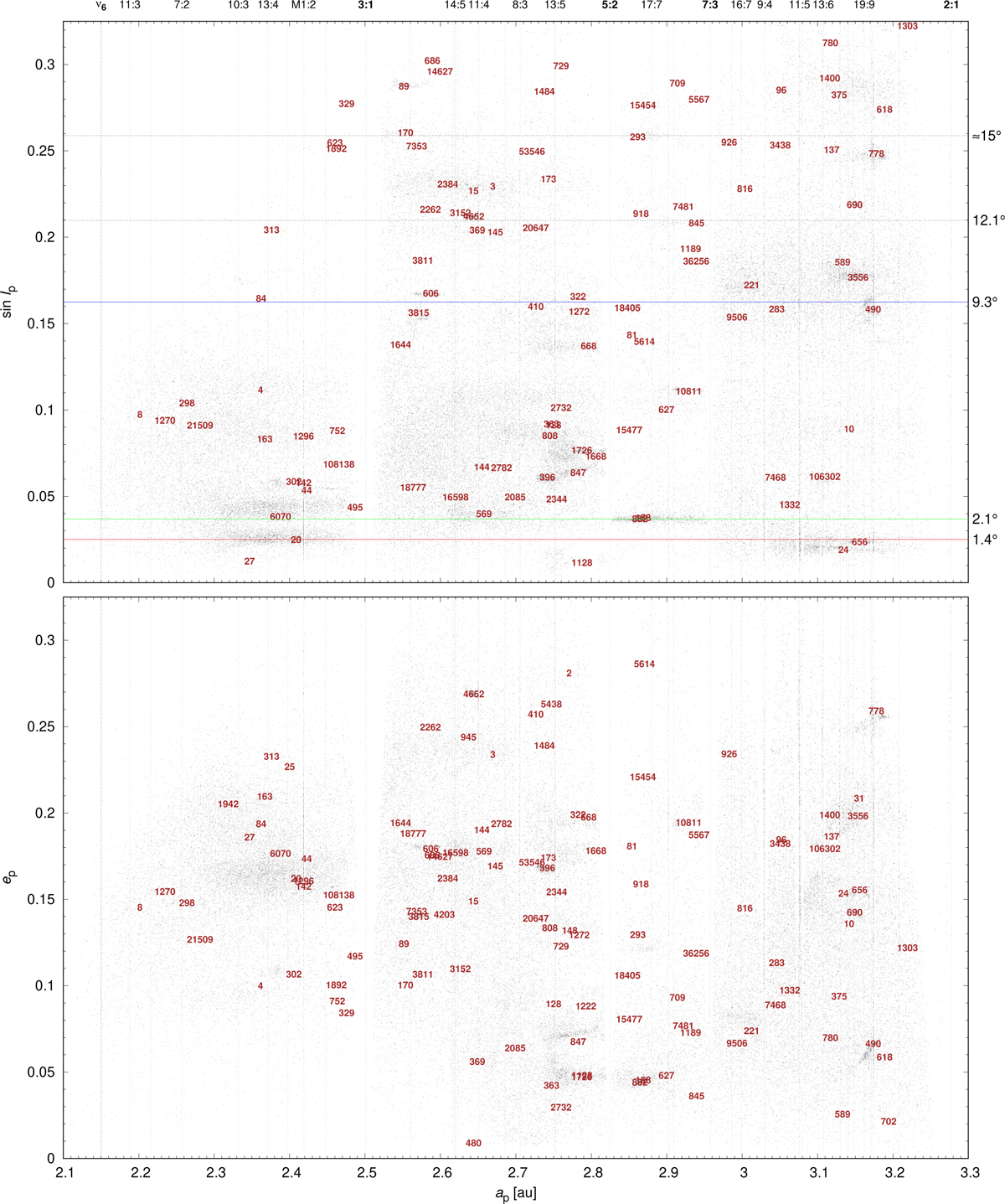Fig. 1

Download original image
‘Faint Main Belt’, showing only bodies with the absolute magnitude close to the limit of the Catalina Sky Survey, id est, H ≳ 19.25 + 5(log(2.2(l − 0.1)) + log(2.2 − 1))) − 5(log(a(l − e)) + log(a − 1))). The proper semimajor axis ap versus eccentricity ep (bottom) versus inclination sin ip (top) are plotted; together with locations of the mean-motion resonances (vertical lines), IRAS dust bands (horizontal lines), and known asteroid families (Nesvorný et al. 2015) (labels). Big and old ones are almost invisible here (e.g. ‘4’ Vesta). Small and young ones − having a steep SFD − are prominent. The distribution of faint bodies is surprisingly irregular. The concentrations are directly related to the sources of meteorites: L .. ‘20’ Massalia (Marsset et al. 2024), H .. ‘158’ Koronis (Brož et al. 2024), CM .. ‘490’ Veritas, CI.. ‘142’ Polana, CO/CV/CK .. ‘221’ Eos, M .. ‘293’ Brasilia, or M .. ‘606’ Brangäne (this work).
Current usage metrics show cumulative count of Article Views (full-text article views including HTML views, PDF and ePub downloads, according to the available data) and Abstracts Views on Vision4Press platform.
Data correspond to usage on the plateform after 2015. The current usage metrics is available 48-96 hours after online publication and is updated daily on week days.
Initial download of the metrics may take a while.


